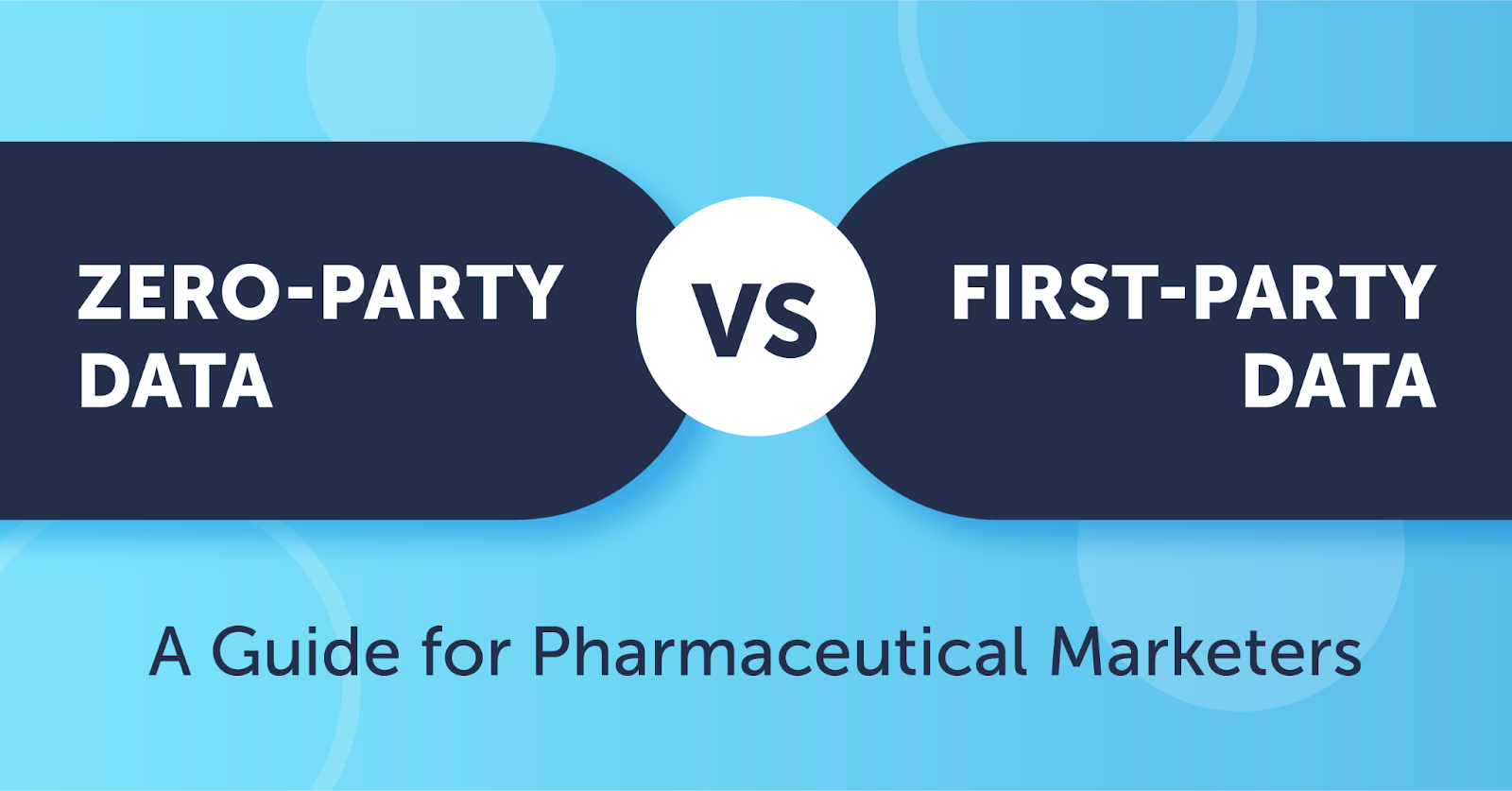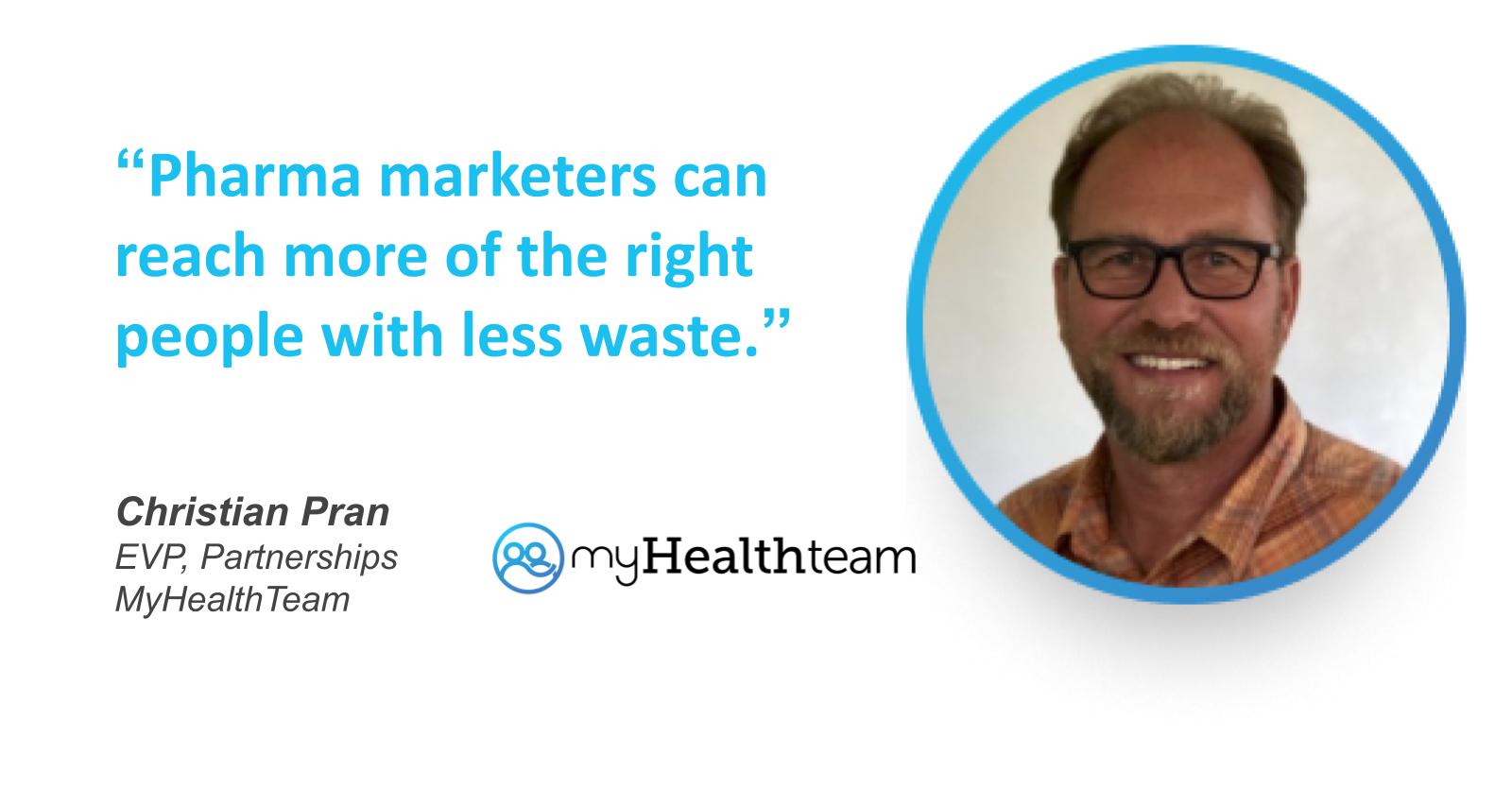Zero Party and First Party Data Defined for Pharma Marketers

By Christian Pran, EVP, Partnerships at MyHealthTeam
Data is not created equally. Understanding the difference between zero-party and first-party data can be game-changing for pharma marketers. Below is a guide on how pharma marketers can reach more of the right people with less waste.
Zero-Party Data Is Intentionally Given by a Patient
Zero-party data is voluntarily and explicitly shared by consumers with a company to gain some benefit in return. They expect the company to use that data on their behalf and in a privacy-compliant way.
For example, when a person joins a MyHealthTeam community, they provide information such as their diagnosis, symptoms, or stage of treatment. In return, they expect us to present them with medically reviewed articles and tools that are personalized based on their specific information. They also gain access to a private social network of people who are on the same health journey, who have the same diagnosis, and who face the same challenges. Patients willingly share data because there is a clear benefit to them and they know their data is kept private.
Privacy and trust is everything when it comes to a patient’s zero-party data. Protect it. Defend it. Never share it, and whatever you do, don’t spam people with irrelevant, nontailored information.
First-Party Data Is Observed and Often Anonymous
First-party data is an educated guess made by observing how a user behaves on your digital platform. For example, a consumer reads an article on your website about back pain, and you drop a first-party cookie on their computer.
You might assume they have chronic back pain. You may even tag that person to 20 other conditions related to back pain, but you don’t know for sure who they are or what condition they may have. They could be a caregiver. They could be someone with inflammatory back pain. They could be someone who has been in a car crash, or someone who slipped a disc moving furniture. Often, that user is a visitor who came in through a Google search, and you have no way to email or text them like you might an actual member sharing zero-party data. So when that user comes back to your site, you have to make a guess about what might be relevant to put in front of them.

Options for the Direct-to-Patient Marketer
Consider a scenario where you want to reach individuals with ankylosing spondylitis (AS), a chronic type of arthritis in the lower spine caused by inflammation. An early symptom is pain in the lower back.
Option 1: Advertise Based on First-Party Cookies and Roll the Dice
Your ads for AS therapies are likely to show up to people with a slipped disc, muscle strain, or even osteoporosis, since the symptoms are similar. We’ve all tried to diagnose our own ailments by asking Dr. Google and ended up reading articles that may not be relevant to us. You’re wasting money advertising AS therapies to a person who hurt themselves moving furniture, but that is a risk you take by targeting with first-party cookies.
Option 2: Advertise Based on Zero-party Data and Reach a Receptive Patient
With zero-party data, your ads will be seen by people who have either said they have AS or who have shared enough of their symptoms to indicate a high likelihood of inflammatory back pain. This is important for underdiagnosed conditions that are not well understood by nonspecialists.
For instance, we have found asking a simple four-question survey of patients with lower back pain helps identify those who likely have AS rather than a physical or mechanical back issue. Those are the people who should be reading about AS, learning how to find a rheumatologist (often a title they have never heard before), and seeing your ad before visiting that specialist. That is how you reach the right patients and avoid wasting limited marketing dollars.
Privacy regulations and third-party deprecation are making zero-party data collection a strategic imperative to pharma marketers. The transition to zero- and first-party data — through trusted partners and patients who opt-in to receive personalized advertising based on their zero-party data — offers opportunities for innovation and consumer-centric marketing strategies. Zero- and first-party data collection methods align with all privacy regulations and compliance, while prioritizing consumer consent and data protection.
Facts at a GlanceZero-Party Data
First-Party Data
|
To learn how you can partner with MyHealthTeam to access zero-party data in your next campaign, please contact partnerships@myhealthteam.com or use the contact form below.
You can also read “Zero Party Data Defined in 30 Seconds” and “ Patient Diagnosis Targeting for Pharma Marketers: Using Zero Party Data To Deliver Better Patient Experiences and Results.”

